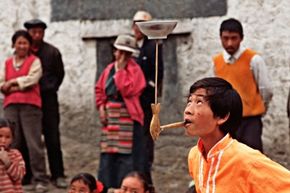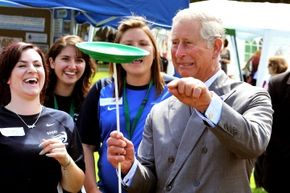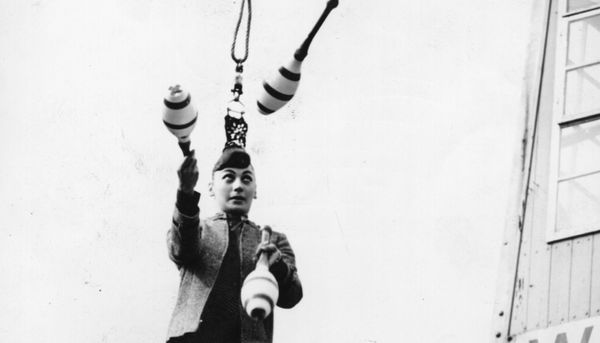When you think of circus acts, you probably envision trained tigers, human cannonballs and agile, airborne acrobats. But one circus act uses plates like the ones you eat off of every day. It's called plate spinning, and it's a mesmerizing testament to the creativity of novelty acts that rely on common physics.
Plate spinning is a circus act that typically involves spinning plates (or bowls, or other dishware) on top of wooden dowels. There are all sorts of variations on this act, such as spinning plates on their edges, letting them whirl about on a tabletop in a blur of motion.
Advertisement
Like juggling and acrobatics, plate spinning requires a mastery of hand-eye coordination and a whole lot of practice. The best performers can fluidly transition from a basic trick like spinning a single plate to much more advanced feats that incorporate multiple types of dishes on numerous surfaces, all at the same time.
Anyone who has ever washed dishes knows that plates aren't always the most cooperative objects. When they're soapy, they slip and crash onto the kitchen floor, often shattering into dozens of sharp shards. Yet for juggling acts, plates and bowls are perfect — they're symmetrical and generally well-balanced.
That makes plates suitable for use as gyroscopes. A gyroscope is a spinning object in which several physics fundamentals converge, allowing for some unusual and often counterintuitive effects, one of which means that a spinning plate can twirl rapidly atop a pointed stick. (We'll feast on more of the physics behind plate spinning later.)
Advertisement




